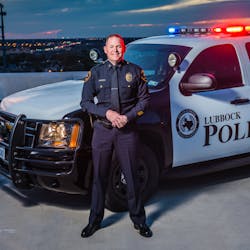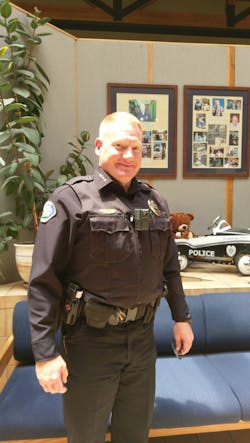Law enforcement technology has vastly expanded in the last decade. Throughout the years many agencies have turned to two technologies in particular that have created—and still do create in some areas—controversy for members of the public and media: body worn cameras (BWC) and Unmanned Aircraft Systems (UAS). Issues of privacy, surveillance and usage are just a few complaints that have been reported when a department implements BWCs or UAS.
When implementing any technology that may cause controversy due to the public’s misperception or lack of knowledge, it’s important to focus on transparency, relay the benefits and form a foundation of trust.
Education, transparency are key
When the Nampa Police Department in Nampa, Idaho, initially discussed purchasing a UAS, Lieutenant Jason Kimball says they received pushback. “We had resistance from local political leaders due to the concern of privacy infringement and random surveillance techniques,” he says. They were able to overcome this obstacle, however, by educating local leaders on both federal and state law. This included the law that requires a search warrant for the use of a UAS for law enforcement.
One of the key ways to handle both the media as well as the public in regard to any concerns they may have over the use of such devices is by educating all parties. This is up to not only the law enforcement agency using the devices but also the companies providing the technology.
“It is important to educate the public as well as police about drones,” says Andy Osantowske, senior unmanned systems analyst for Evans Incorporated and PropelUAS, which work with agencies to educate them on the use of UAS. “We launched a new division to specifically address these concerns and challenges.”
Greg Stevens, chief of police for the Lubbock Police Department (Texas), says his department advocates the use of technology. When unit cameras began to surface, LPD was quick to implement the use of them in their police units. Stevens says when the time came to consider using body cameras as well, LPD held a press conference in order to review the reasoning behind the implementation of such devices.The department made it a point to ensure that the public as well as the media understood the use of body cameras as a source of protection for all parties involved. “There is no better evidence than video,” says Stevens. “There is a great benefit to using body cameras.”
Explaining and demonstrating the benefits of a certain piece of technology is important to helping the public understand its usefulness.
In Nampa, Idaho, once the department took the time to educate local leaders regarding UAS operations, and the benefits for officers, they had the support of the public. “We developed a policy that limits the use of UAS to incidents where a search warrant has been obtained, crime scene documentation and search and rescue,” says Kimball. The UAS has saved Nampa PD both time and money in many situations and also has put officers at less risk—a few points the department highlights. “We have found during duty tactical operations the UAS saves a considerable amount of time.”
An example of this would be when searching an open field with high weeds that would normally require several officers walking side-by-side with no cover. By using the drone the agency is able to clear the area in a few minutes with just an operator and observer team with no risk of harm. This particular attribute is one of the most important capabilities that a UAS offers. “The use of UAS allows us to reconnoiter a location without sending officers in to an uncleared area, reducing the risk to them,” states Kimball. “We have seen other agencies not have the support we have had in part because lack of education or transparency, both areas we worked hard on prior to deploying the UAS,” Kimball says.
Build trust
Transparency helps agencies build trust with the media and public. The Ruidoso Police Department (RPD) in Ruidoso, N.M., acquired body cameras through the New Mexico Municipal League Self-Insured Fund. “The village was supportive of our request for body cameras,” says RPD Chief of Police Darren Hooker. RPD handled their introduction of the use of body cameras to the public by going to the local news. “We have had more requests for video pertaining to cases,” says Hooker. He adds that the use of body cameras proved helpful in a recent case. “In this particular incident having the video evidence showed the restraint our officer upheld and revealed what actually took place in the event.”
When it comes to maintaining a positive image with the media, it is crucial to build trust. “Discuss what you can initially, that way when you have a situation you cannot discuss, they will trust you,” says Stevens. “Don’t hide the bad, either. Own up to it.” Stevens says LPD has the courage to make things right in situations. Stevens suggests relaying every piece of information that you can so that there are no questions or room for doubt. “We at the Lubbock PD strive to maintain transparency with media and the public,” states Stevens. The agency is willing to give information as long as it does not hurt or hinder an investigation. “It is all about expectations.”
Kyle Bonath, chief of police at Texas Tech University PD, provides similar advice to agencies. “Be honest about your department’s use of body worn cameras and be ready to articulate where and why camera coverage was lacking or insufficient.” Bonath says being direct and providing an explanation for why you cannot release certain video footage is key. “Consistency in both message and information released from incident to incident should be upheld.”
The Ruidoso PD is also forthcoming to the local news with information as long as it does not interfere with an open investigation. A position of good standing with the local community and media is key to retaining trust.
Proposing a new device
When the use of a new device or method is proposed, the Lubbock PD builds a plan and reveals the proactive usability of the device. Being honest reduces the chance for liability as well.
When the time came to request the use of UAS at the LPD, the agency presented a business plan with cost details and policy use. Stevens says the drones used by their agency are mostly used for crime scene mapping. “Our drones are used by our Identification unit; they are not currently deployed for patrol.” Stevens says the use of drones is safer in regard to all aspects. Utilizing drones allows officers to monitor particular situations from afar. This way they can assess whether they need to send in units or not depending on the escalation of the situation. In addition, UAS gives law enforcement personnel an additional “eye” on evading suspects, missing persons and other situations. “They are also cost effective in that they use less man power,” says Stevens.
The Texas Tech University PD gradually added body cameras to their department but was fortunate to not run into any reservation or concern from the community or media. “As a university police department we did not hold a formal press conference or do a press release to announce our use of body worn cameras,” says Bonath, who says to date TTPD has had only one media inquiry about the department’s use of body worn cameras. “The majority of questions are incident-related and primarily concern not being provided enough camera angles or views of an incident.”
As agencies around the U.S. continue to invest in BWCs and UAS technologies, more attention will be focused on these products. Agencies must be prepared to field questions from those not in the law enforcement segment. As long as departments educate the public and the media in a clear manner, there should not be a negative view in regard to the use of BWCs or drones in LE agencies.
Hilary Romig has extensive law enforcement training and is employed by the Lubbock Police Department (Texas).

Hilary Rodela
Hilary Rodela is currently a Surveillance Officer, a former Private Investigator, a former Crime Scene Investigator, and Evidence Technician. She worked for the Ruidoso (NM) Police Department as well as the Lubbock (TX) Police Department. She has written for several public safety publications and has extensive law enforcement and forensic training and is pursuing forensic expertise in various disciplines. Hilary is a freelance public safety writer and curriculum developer for the National Investigative Training Academy.





